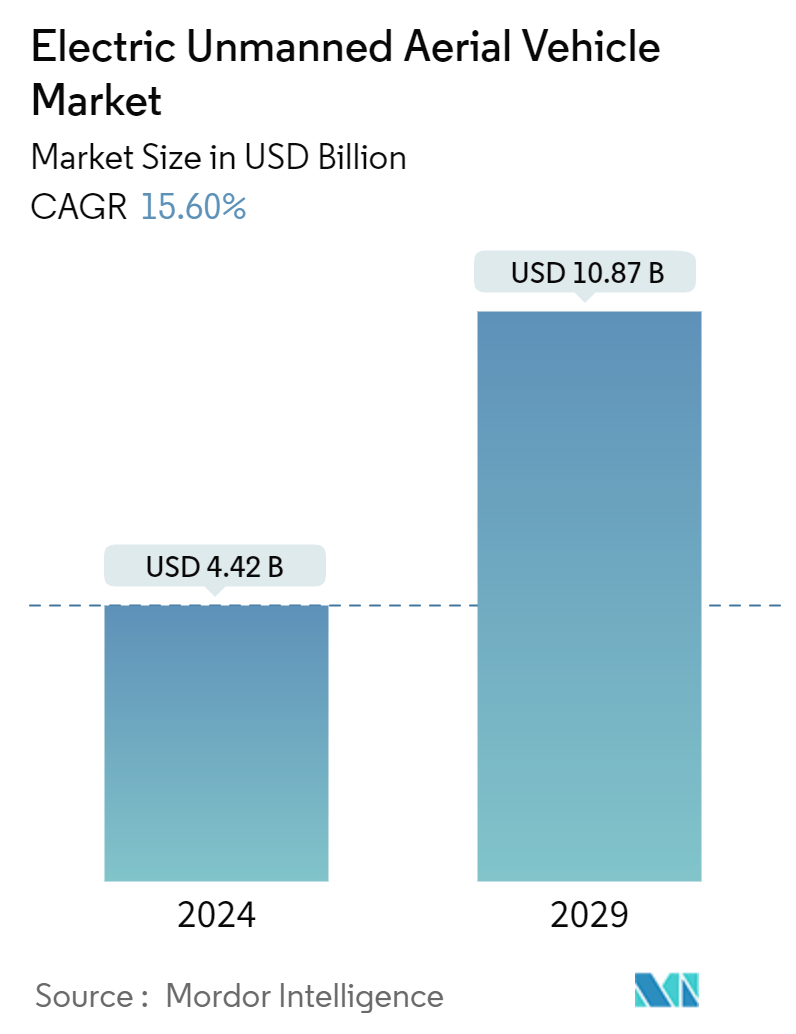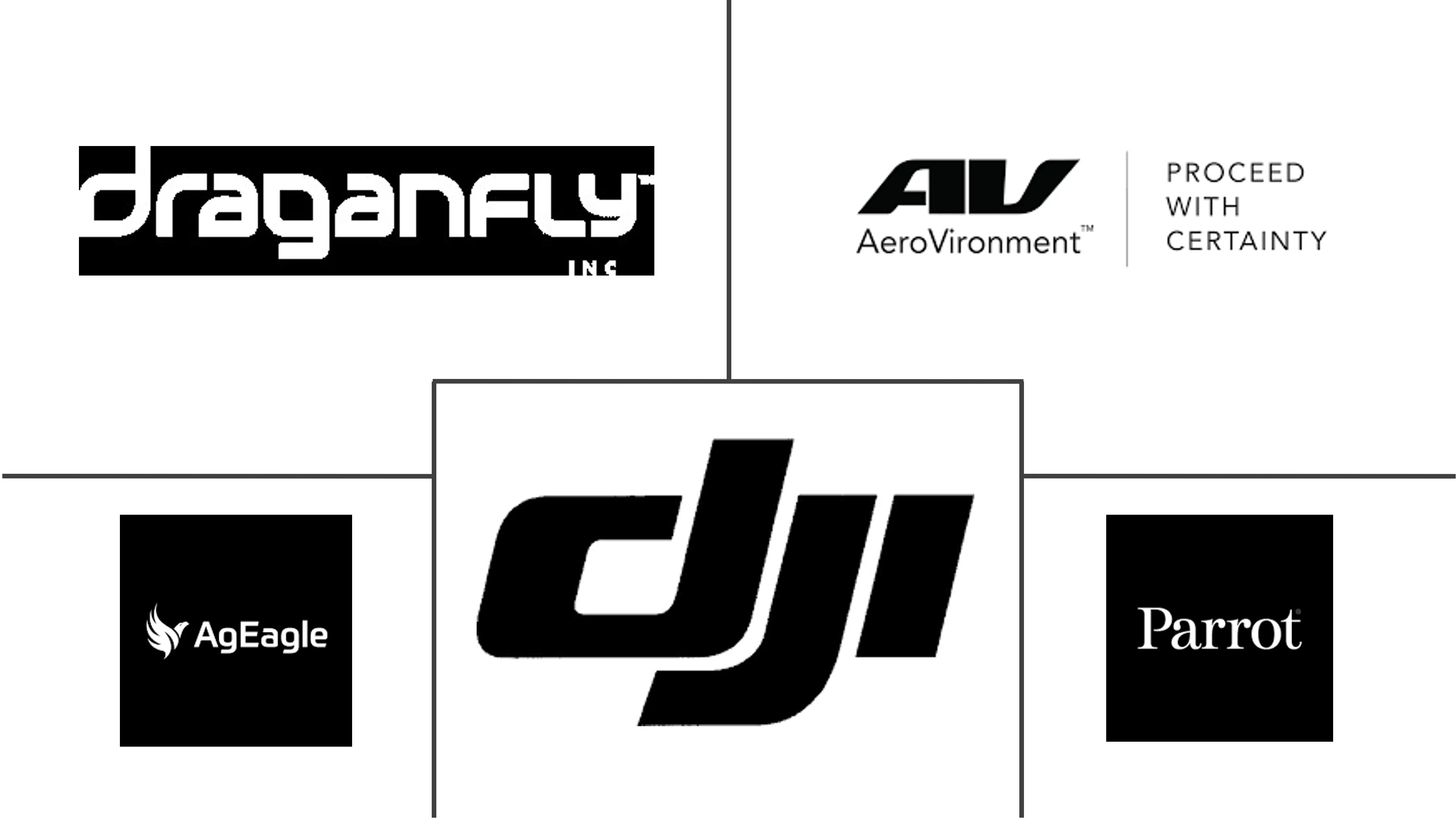Market Size of Electric Unmanned Aerial Vehicle Industry

| Study Period | 2019 - 2029 |
| Market Size (2024) | USD 4.42 Billion |
| Market Size (2029) | USD 10.87 Billion |
| CAGR (2024 - 2029) | 15.60 % |
| Fastest Growing Market | North America |
| Largest Market | North America |
Major Players
*Disclaimer: Major Players sorted in no particular order |
Need a report that reflects how COVID-19 has impacted this market and its growth?
Electric Unmanned Aerial Vehicle Market Analysis
The Electric Unmanned Aerial Vehicle Market size is estimated at USD 4.42 billion in 2024, and is expected to reach USD 10.87 billion by 2029, growing at a CAGR of 15.60% during the forecast period (2024-2029).
- For several years, the unmanned aerial vehicle (UAV) market has been developing, and it is facing a need for more adoption in the commercial sector. Although initially viewed as military devices, drones have established a significant presence in the commercial sector over the past five years. Over the years, with several new exemptions from governing bodies like the FAA and EASA, the demand for UAVs has emerged from various industries, like infrastructure, agriculture, transport, entertainment, security, and insurance.
- Advancements in UAV flight technologies have allowed manufacturers to produce various models in different sizes, weights, and shapes, carrying different sensor payloads, making them favorable across a broad application base. Moreover, Ongoing efforts to reduce production costs and enhance manufacturing efficiency make electric UAVs more economically viable, attracting a more comprehensive range of consumers.
- One significant restraint is the limited endurance of electric UAVs compared to traditional fuel-powered counterparts. Despite advancements in battery technology, some applications require longer flight durations, posing challenges for electric UAV adoption in specific scenarios. Associated safety concerns with UAVs are anticipated to further restrict the growth of the E-UAV market to a certain extent.
